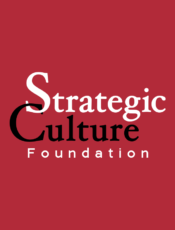By Beth GEGLIA
“The life of just one person is worth more than the private property of the richest man.” This is what’s written on the Calixto Garcia public hospital in Havana Cuba as a testament to the country’s commitment to free public healthcare, and to putting people before profit. I know this about Cuba because in March, at the onset of the global Covid-19 pandemic, I spent a week in the ICU at Calixto Garcia. I had been hit by a speeding ambulance, and Cuban doctors saved my life, operated on me twice, and nursed me to stability before putting me on a private medical evacuation flight back to the U.S. All of this, including the flight, was free of cost to me- covered by Cuba’s government-run insurance for foreign visitors. From my hospital bed, as the global emergency around me escalated, I witnessed how the Cuban government swiftly mobilized resources to protect its citizens from Covid-19: at-home testing for anyone with symptoms, door to door preventative education in the most vulnerable neighborhoods, and coordinated isolation when necessary. While deaths soared toward 100,000 in the U.S., Cuba was able to get the average daily Covid-19 related deaths close to zero for most of May-August.
Cuba’s humanist approach when it comes to health was not new to me. In 2013, I co-directed a documentary on a free hospital in northern Honduras. The doctors there, all from afro-indigenous Garifuna communities, had been trained in Cuba at the Latin American School of Medicine (ELAM) for free. Cuba created the ELAM in 1999 to train doctors from the poorest regions of countries around the world (including the U.S.), providing full scholarships of six years tuition, room, and board, with the hope that these doctors would return and provide accessible and preventative healthcare in their communities. The ELAM was born as a response to the devastation of Hurricane Mitch in 1998, and has trained tens of thousands of doctors from over 110 countries since then.
Cuba is now poised to play an important role in global efforts to curb the pandemic. New variants in South Africa and Brazil, all with yet unknown implications for vaccine effectiveness, have shown us that any effort to achieve herd immunity is only as good as it is accessible equitably across the globe. Yet, as predicted, the global north is outpacing the global south dramatically in vaccination.
On February 3, Anthony Fauci said, in an event hosted by the Journal of the American Medical Association (JAMA) network, that developing COVID-19 vaccines “is not a race.” “We want everybody to get over the finish line,” he assured. Dr. Fauci mentioned the Russian and the Chinese vaccines and later suggested that the U.S. should help other countries strengthen their vaccine manufacturing capacity to promote more vaccinations globally. At no point did he mention Cuba.
Thanks to an established publicly-funded biotechnology program, Cuba currently has four vaccine candidates. One of those vaccines, Soberana 02, started Phase 3 clinical trials in early March. Another candidate, Abdala, started Phase 2 trials in February. Both vaccines are being developed by public research institutions and are the most promising candidates in Latin America. The fact that Dr. Fauci failed to mention these candidates is disappointing.
The U.S. and other governments should set aside antiquated hostility toward Cuba and support the development and distribution of its vaccines. The first step is to take the vaccine candidates seriously and remove any barriers presented by U.S. sanctions. Second, global actors should support Cuba’s efforts to scale up manufacturing, should they decide to pursue this. Unlike current vaccines which are hoarded by the Global North, Cuba’s vaccine candidates have the potential to become the “people’s vaccine” that activists and scientists around the world have called for. For example, the World Health Organization’s (WHO) Covid-19 Technology Access Pool (C-TAP) makes it possible to have the first vaccine ever licensed openly on the global stage. While the WHO’s better-known COVAX program aims to pool procurement and distribute vaccine doses more equally, it does nothing to address the underlying intellectual property regime that produces monopolies on vaccines and limits their manufacturing. The C-TAP was created at the onset of the pandemic to pool the rights to life-saving technologies and facilitate a truly equitable and effective vaccine roll out, but no country or company has chosen to license through the C-TAP to date.
Regardless of the mechanism, Cuban officials have stated a clear intention to, once again, place people before profit. “Cuba’s strategy to market the vaccine is a combination of things; first comes humanity and the impact on health, and in second place is our industry’s need to sustain sufficient production of the vaccine and medicines for the country,” explained Vicente Vérez of the Finlay Vaccines Institute in Cuba for Prensa Latina TV. “We are not a multinational where returns [on investment] are the number one reason for existing, and improving health is just a consequence. We work the opposite way. For us, it’s about achieving health. The returns are a consequence of achieving health, but they will never be the priority.”
Having an adequately tested and accessible vaccine from Cuba will, as the Soberana 02 name suggests, contribute to the autonomy of countries like Cuba and nearby Haiti to safeguard their populations free from dependence on multinational monopolies. But it also might be the saving grace for the botched global vaccine rollout that leaves us all susceptible to new strains. The US should support Cuban vaccine development because it is good for us and it is good for the world.








